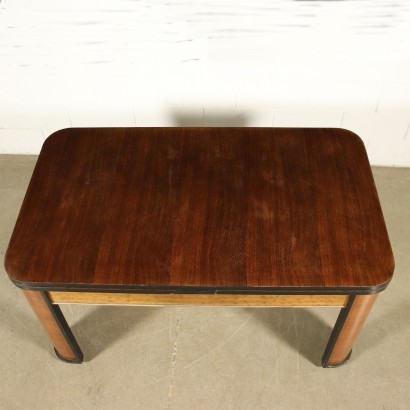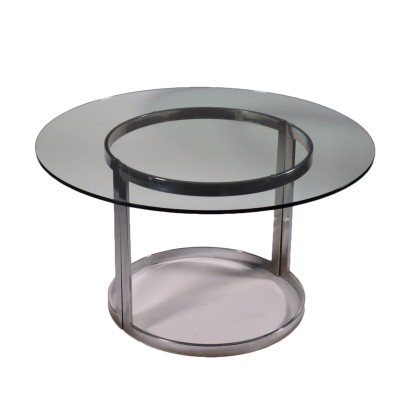Tavolo Allungabile Art Decò
Features
Style: Art Deco (1920-1950)
Age: 20th Century / 1901 - 2000
Origin: Italy
Main essence: Maple , Rosewood
Description
Tavolo allungabile Art Decò, sorretto da gambe convesse con profili ebanizzati e impiallacciate in palissandro, così come il piano; la fascia sottopiano è impiallacciata in acero.
Product Condition:
Prodotto in discrete condizioni che mostra alcuni segni di usura.
Dimensions (cm):
Height: 77
Width: 145,5
Depth: 85
Maximum size (cm):
Width: 259,5
Additional Information
Style: Art Deco (1920-1950)
The name Art-Decò derives from the exhibition held in Paris in 1925, which was called the International Exhibition of Modern Decorative Arts and was the successor of the Liberty style.Art-Decò is a stylistic historical period formed after the Liberty floral period, shortly after the end of the First World War.
There was an almost radical change anticipated by the growth of the Precisionist movement and that of Cubism (in art), the Art-Decò furnishings were characterized by decidedly more rigid lines and the presence of geometric figures, definitively abandoning the sinuous and moved lines , of objects and furnishings, of the previous Liberty period.
It was established from the dawn of 1915 until the early 30's.
This style was transversal and major exponents were created in the most diverse art forms, from urban architecture to painting, from sculpture to glass masters, from the production of objects as a complement to furnishings to jewelry.
Age: 20th Century / 1901 - 2000
20th Century / 1901 - 2000Main essence:
Maple
Hard, light wood used for inlays. It grows mainly in Austria, but it is widespread throughout the northern hemisphere, from Japan to North America, passing through China and Europe. It is one of the lightest woods ever, tending to white, it is similar to lime or birch wood. The briar is used in the production of ancient secretaires .Rosewood
Under the term Rosewood various exotic, hard and heavy woods have been united, characterized by a color that varies from pink to violet. Their origin is usually from Latin America, India and Africa and are still considered very valuable woods. Until the end of the eighteenth century, this name also referred to the bois de violette . In general, rosewood woods began to be imported into Europe starting in 1750 and were first used for veneers and inlays in England, flanked, by contrast, with lighter woods. Later, entire valuable furniture was manufactured both in England, mainly in the Regency style, and in France, starting from the Neoclassical period. Alternative proposals






















